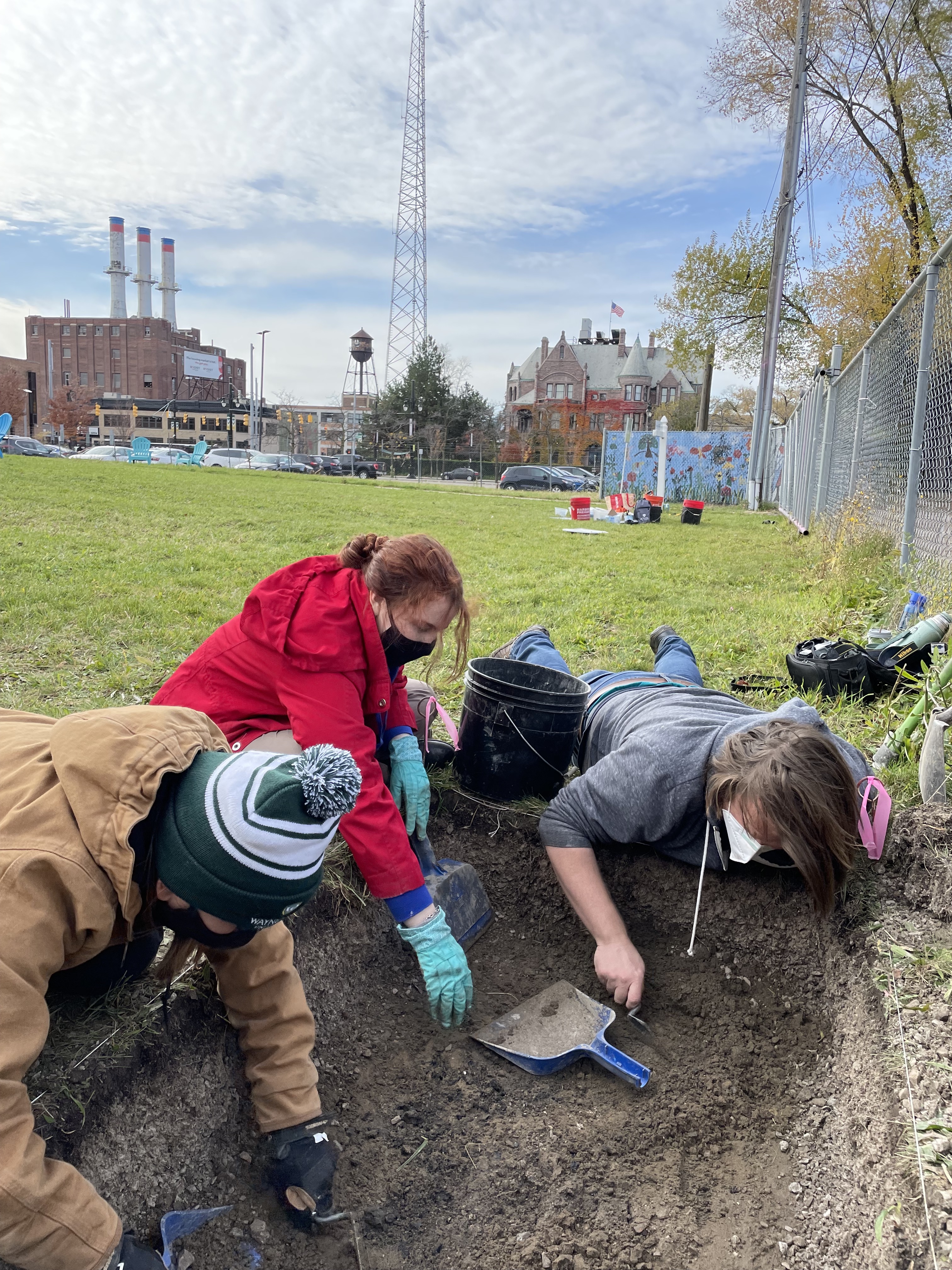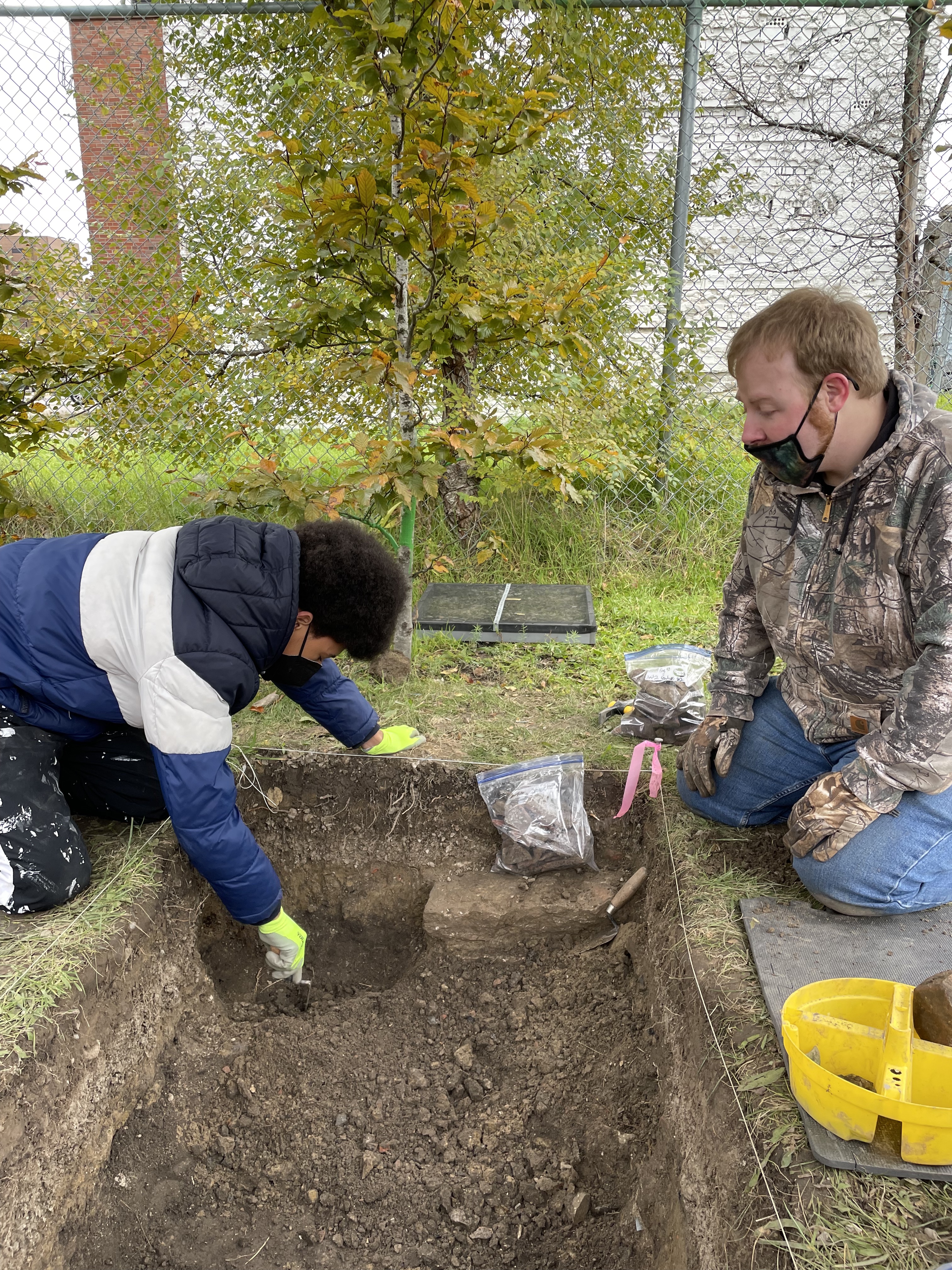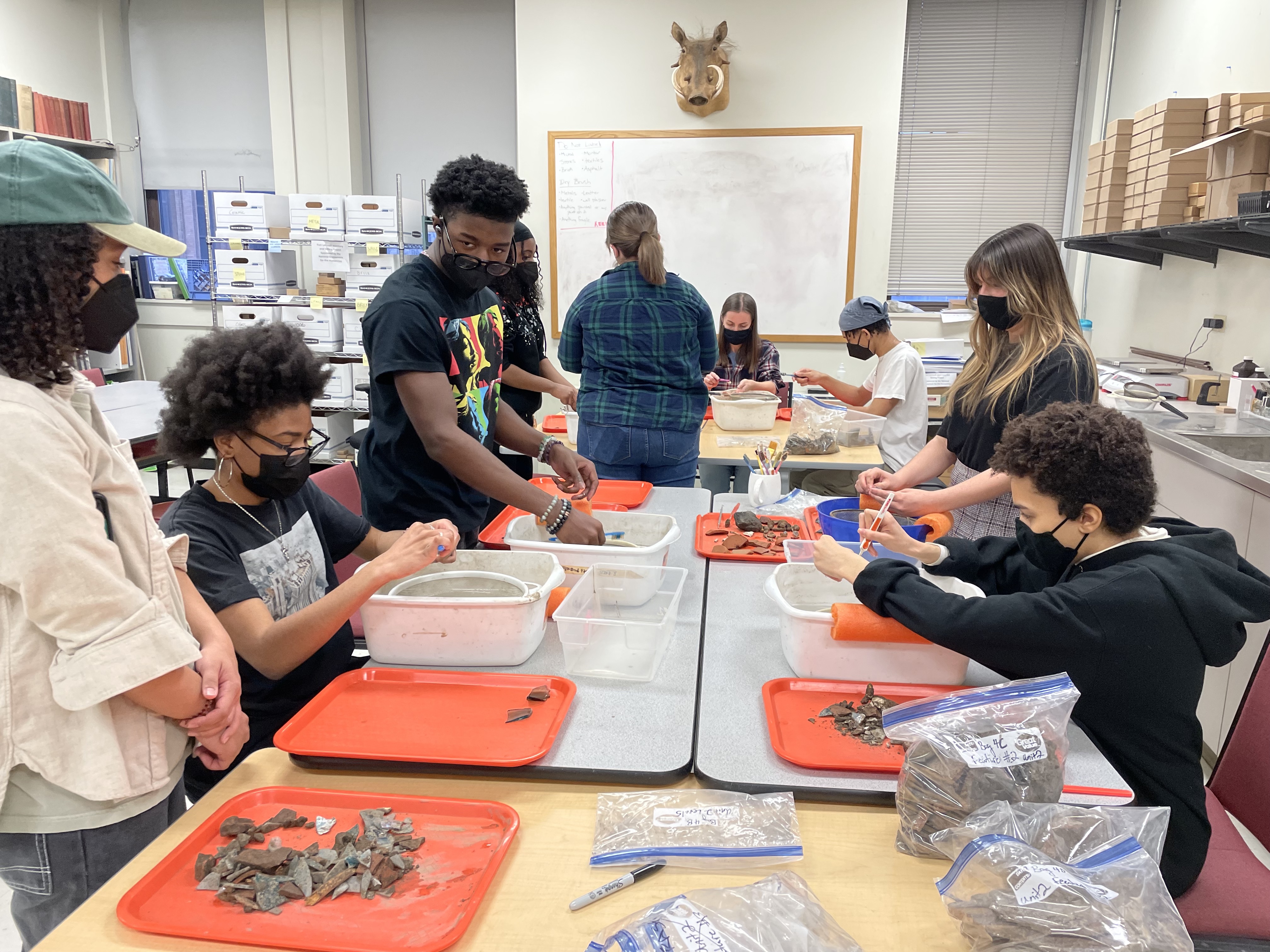Art & Archaeology Collaboration in Detroit: Wayne State archaeologists partner with MoCAD Teen Council and Artist Jan Tichy

Recent community-based archaeological excavations in the back lot of the Museum of Contemporary Art Detroit (MOCAD) revealed the intact remains of a nineteenth-century greenhouse, dormitory for homeless women and children, and a privy from a women's prison.
This exciting partnership between artists and archaeologists promises future collaborations in the service of unearthing understandings of the city.
From November 12-13, 2021 Dr. Krysta Ryzewski (Wayne State University) and Dr. Rebecca S. Graff (Lake Forest College) directed excavations on the property of the Museum of Contemporary Art Detroit (MOCAD). The project was initiated by Jan Tichy, a contemporary artist and Associate Professor at the School of the Art Institute of Chicago.
While preparing his exhibit at MOCAD, Tichy attended a lecture by Graff about her recent book on the archaeology of Chicago during the 1893 World's Fair. Tichy reached out to Ryzewski about the feasibility of using urban archaeology in a similar manner at the MOCAD site to further interpret and expand upon his exhibit, All Monsters. The exhibit, which intervenes within MOCAD's permanent exhibit, the late artist Mike Kelly's Mobile Homestead, addresses underlying feelings of trauma from the original Kelly exhibit with light, mirrors, sound, and artifacts.
Mike Kelley's Mobile Homestead is located in the back lot behind the main building of the MOCAD. Below the Homestead is approximately forty feet of intricately dug, subterranean rooms. The homestead basement represents the trauma experienced by Kelly and access is strictly restricted to a hand-selected group and is off-limits to the public. The archaeological excavations were therefore intended to fill in the associated history and possible trauma experienced in the area of a widow's greenhouse from 1889 and a woman's prison from 1913, which also contained a dormitory to house homeless women and children.

Ryzewski, whose new book on Detroit archaeology was recently published, organized the project with MOCAD's Youth Program Coordinator, Crystal Palmer, and the MOCAD Teen Council. The Teen Council was created in 2014 as a competitive program for artists ranging from 13 to 18 years old. Involvement with the Council includes opportunities to participate in weekly event planning in association with the MOCAD.
The support from the program also allows the creative abilities of the members to flourish while encouraging inclusivity and challenging conventional artistic norms. They joined Ryzewski, Graff, and Wayne State University graduate students Julia DiLaura, John Cardinal, Casey Carter, Amanda Ford, Kimberly Shay and Wayne State undergraduate, Brianna Leblanc, on the public day. We hosted over 30 visitors during the public day of excavations, which was also covered by the Detroit Free Press.
In March 2022 Ryzewski and her students invited the MOCAD Teen Council to the Wayne State University archaeology lab to collectively undertake further analysis of the artifacts. They spent a fun afternoon together viewing the exhibits in the Grosscup Museum of Anthropology and cleaning the artifacts they helped to excavate.
This fall, after artifact cataloging and analysis are completed, Ryzewski will return the artifacts to the MOCAD Teen Council and the young artists will use the materials in their creative works - sculptures, digital art, mosaics and other visual art installations that speak to Detroit's urban past and future.

A longer summary of the excavations appears in a short article co-authored by WSU anthropology undergraduate Brianna LeBlanc, and Professors Rebecca Graff and Krysta Ryzewski in the Society for Historical Archaeology's newsletter.